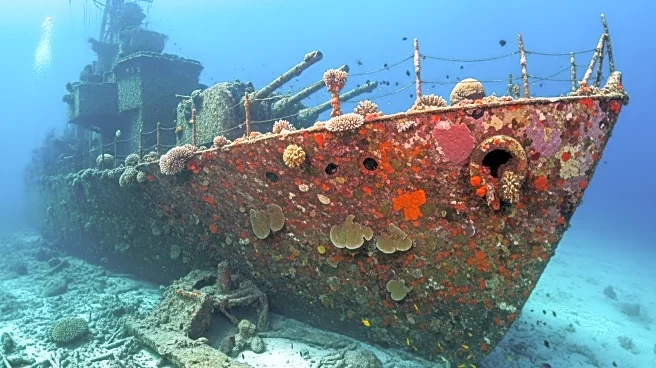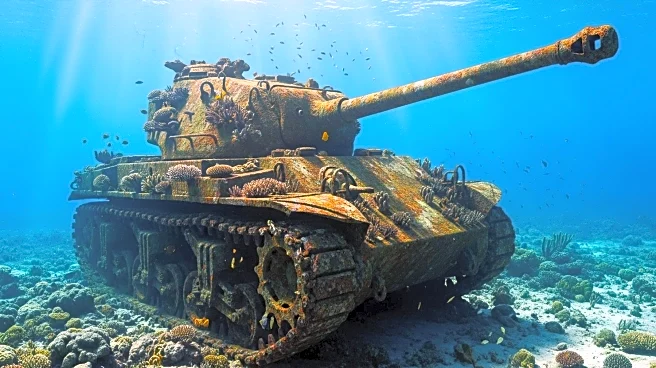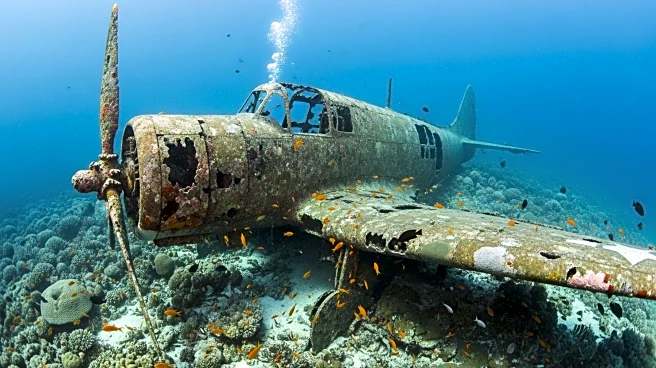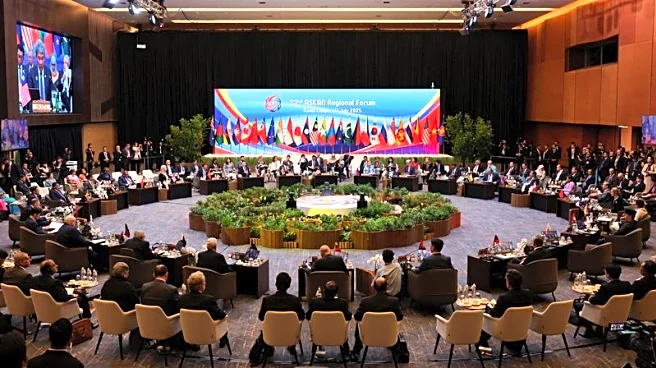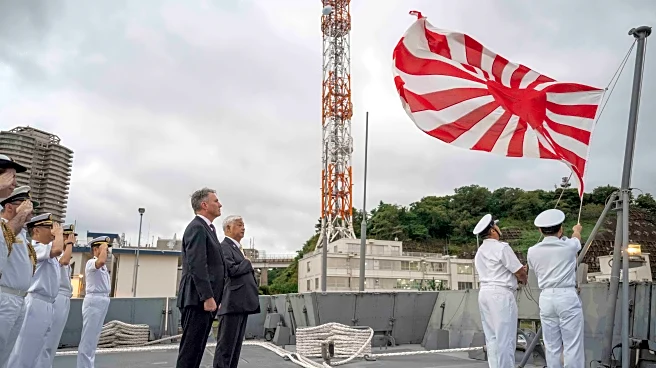What's Happening?
Eighty years after the end of World War II, the Pacific region remains affected by remnants of the conflict, including sunken warships, aircraft, and unexploded bombs. These artifacts, while historical, pose significant environmental hazards as they leak fuel, heavy metals, and other toxic substances into fragile ecosystems. Rising sea levels further exacerbate these issues, threatening structures like the Runit Dome in the Marshall Islands, which contains radioactive waste from past U.S. nuclear testing. The legacy of the war continues to endanger biodiversity and human health in the region.
Why It's Important?
The ongoing environmental impact of World War II remnants in the Pacific highlights the long-term consequences of conflict on ecosystems and human communities. Toxic pollutants from these artifacts can enter the food chain, posing serious risks to biodiversity and human health. The situation underscores the need for coordinated international efforts to address these hazards, restore damaged ecosystems, and monitor health impacts. The 80th anniversary of the war offers an opportunity for regional partners to lead in remediation efforts and support affected communities.
What's Next?
Efforts to address the toxic legacy of World War II in the Pacific require increased funding and international cooperation. Programs like Operation Render Safe, led by the Australian Defence Force, aim to remove dangerous materials, but more comprehensive action is needed. Regional partners, including Australia, New Zealand, Japan, and the United States, have the opportunity to invest in environmental cleanup and support affected communities. Listening to Pacific voices and incorporating their knowledge and experience into response strategies is crucial for effective remediation.
Beyond the Headlines
The enduring environmental harm from World War II remnants in the Pacific raises ethical questions about historical responsibility and the need for reparative justice. The situation also highlights the intersection of climate change and historical conflict, as rising sea levels and extreme weather events increase the risks posed by these toxic legacies. Addressing these issues requires a holistic approach that considers both environmental and social dimensions, ensuring that affected communities are central to decision-making processes.
